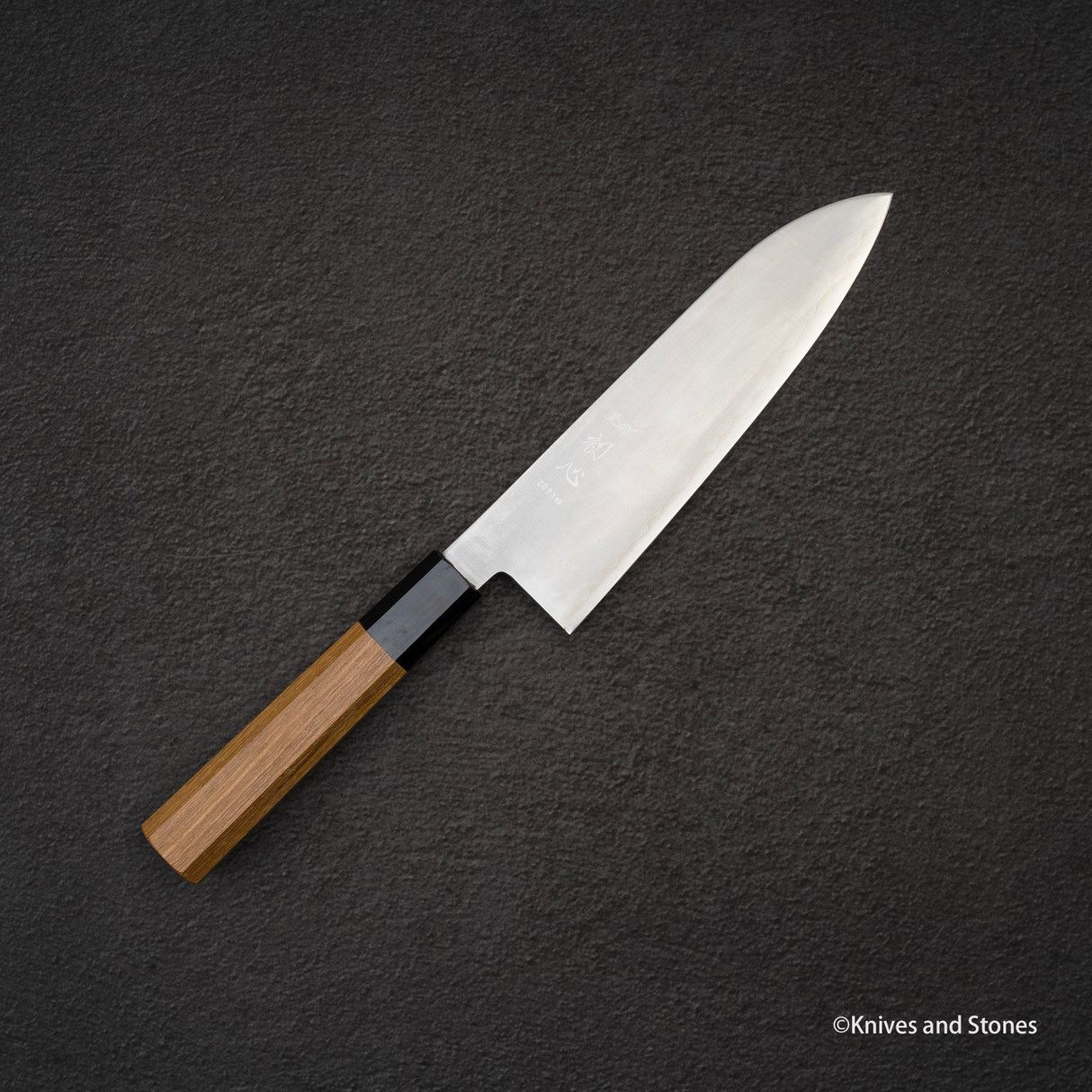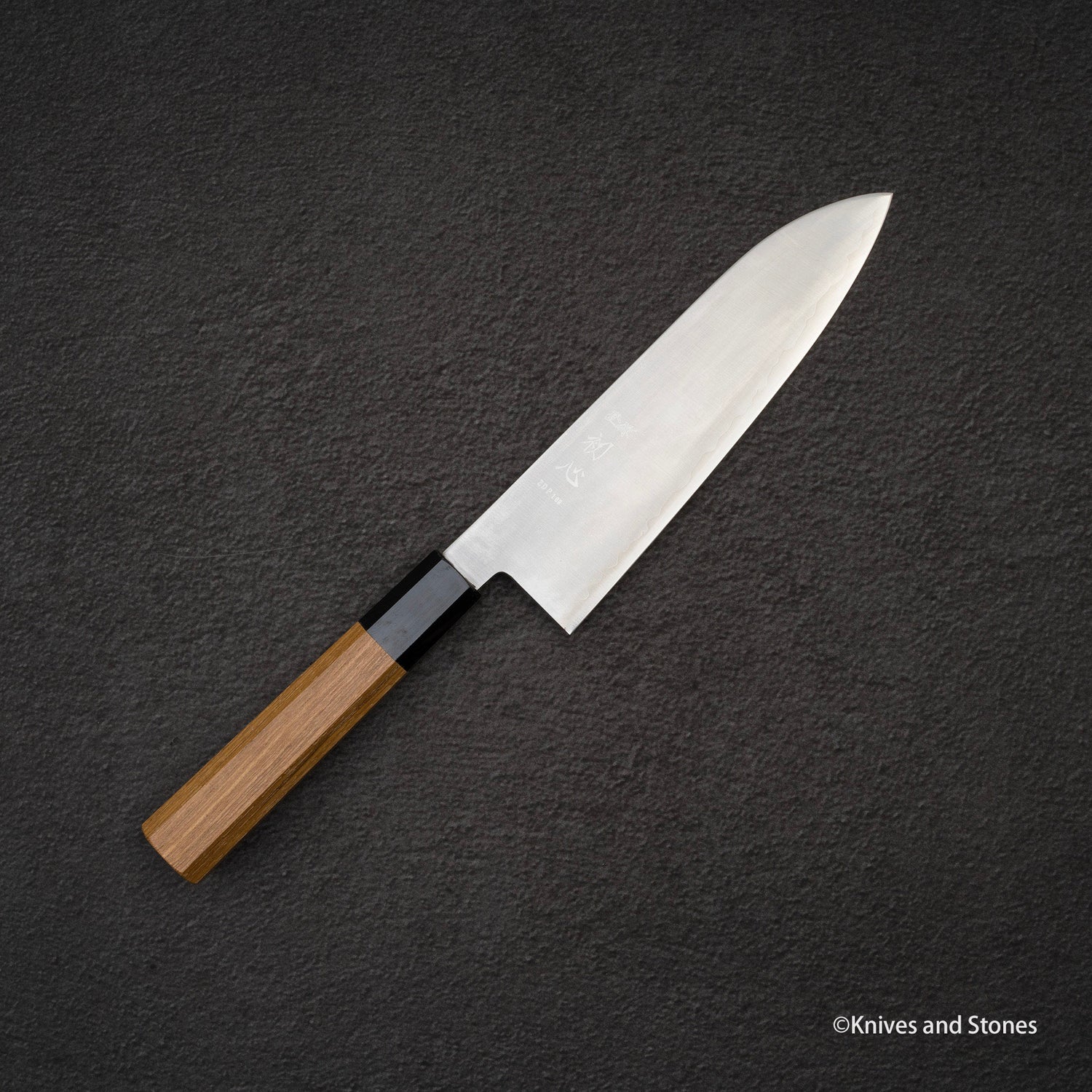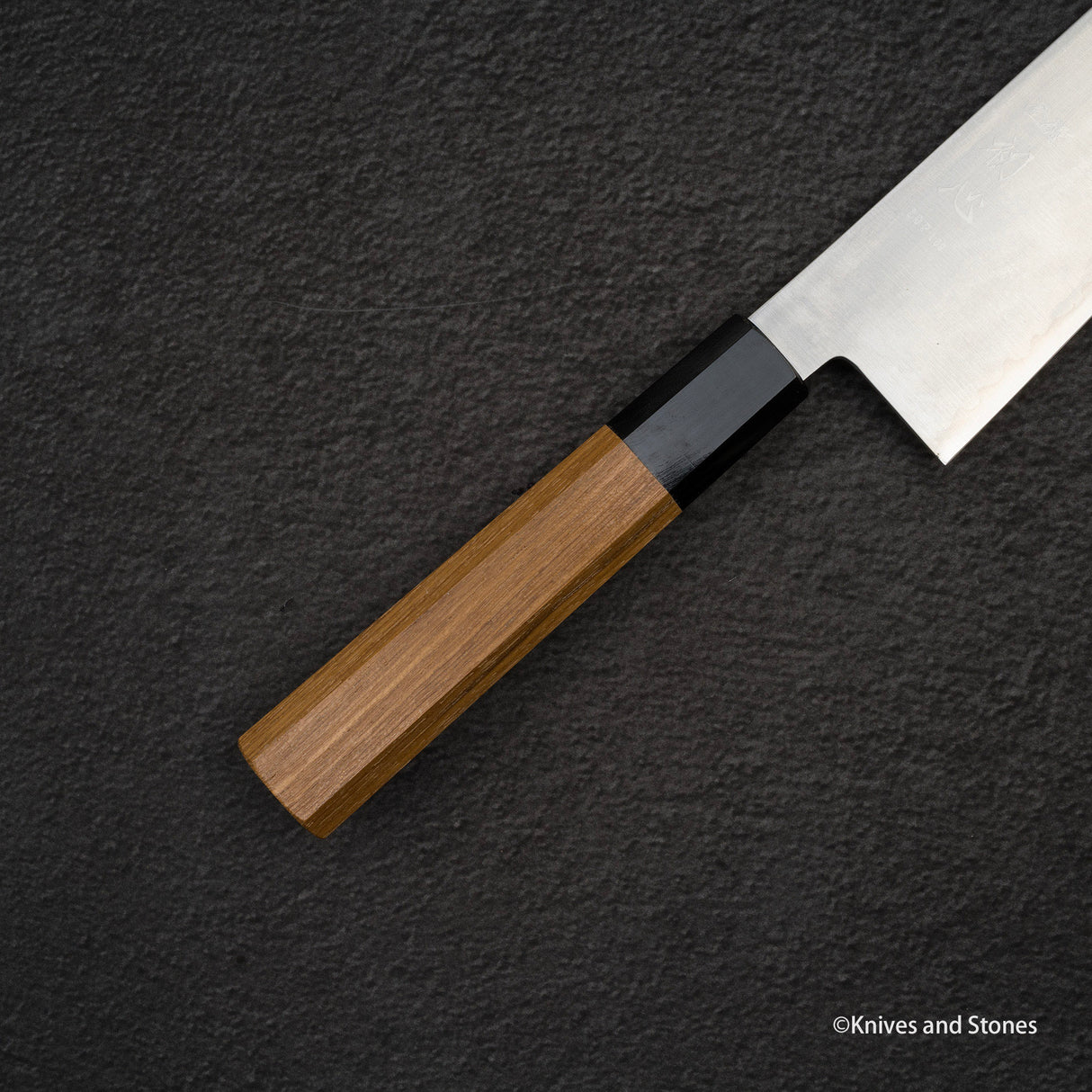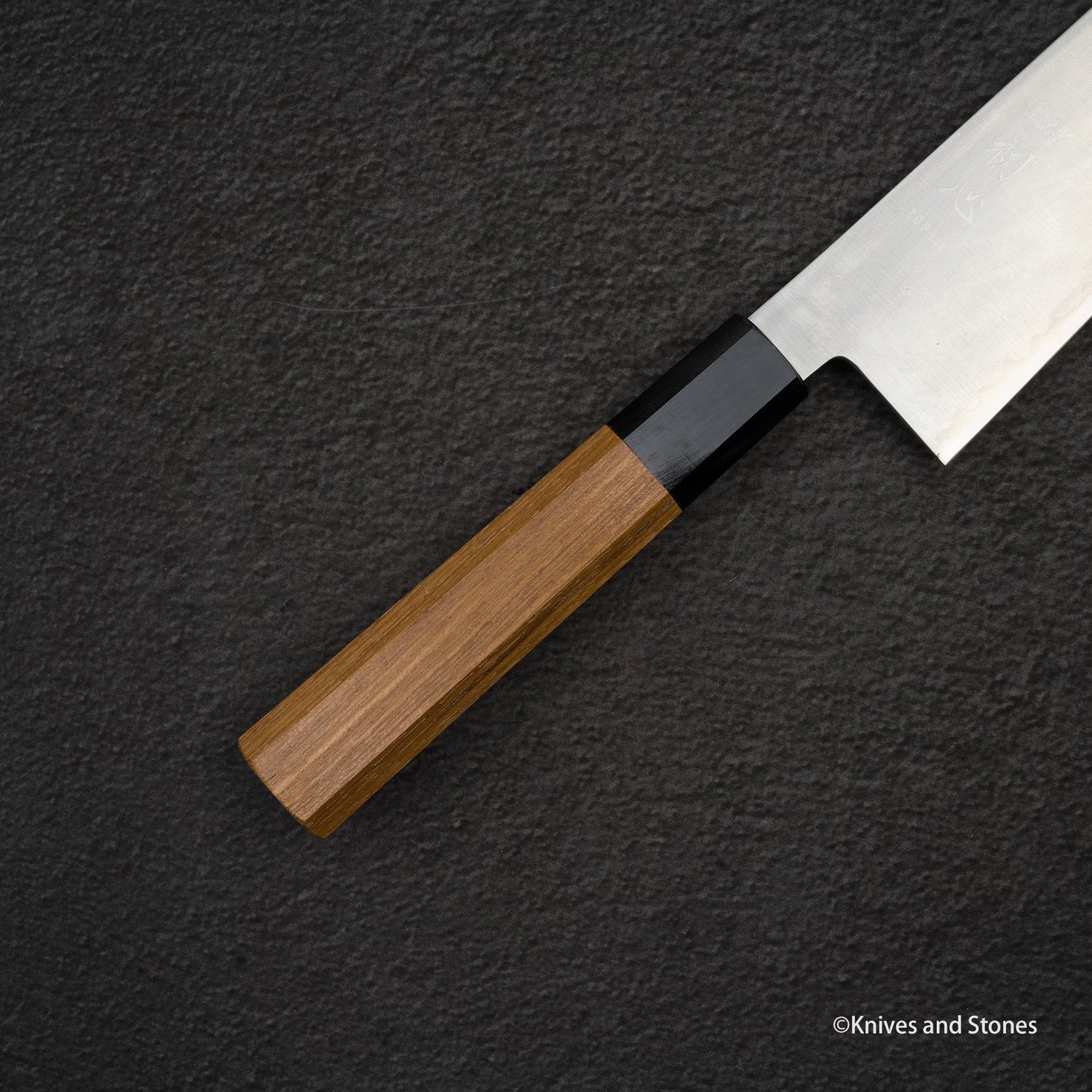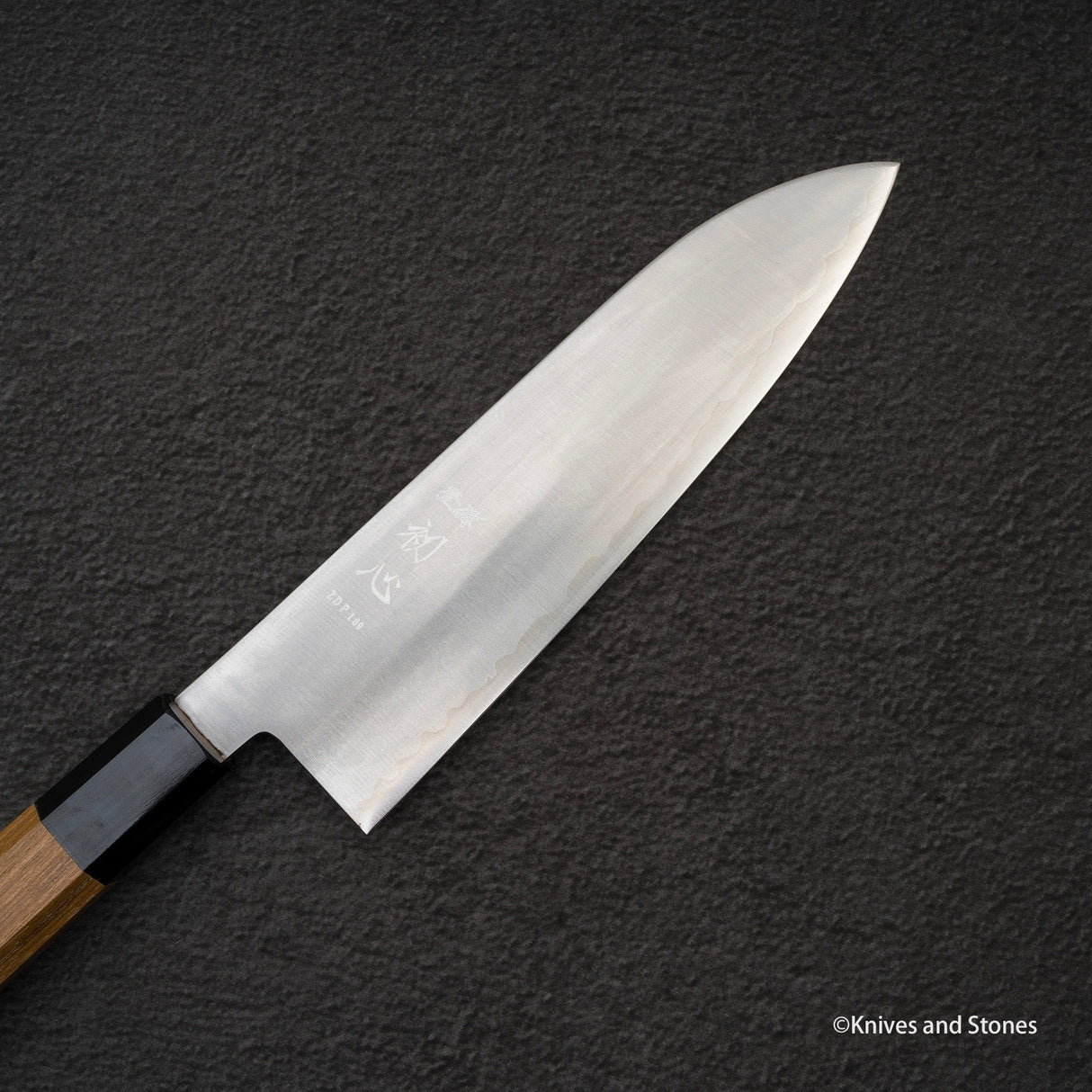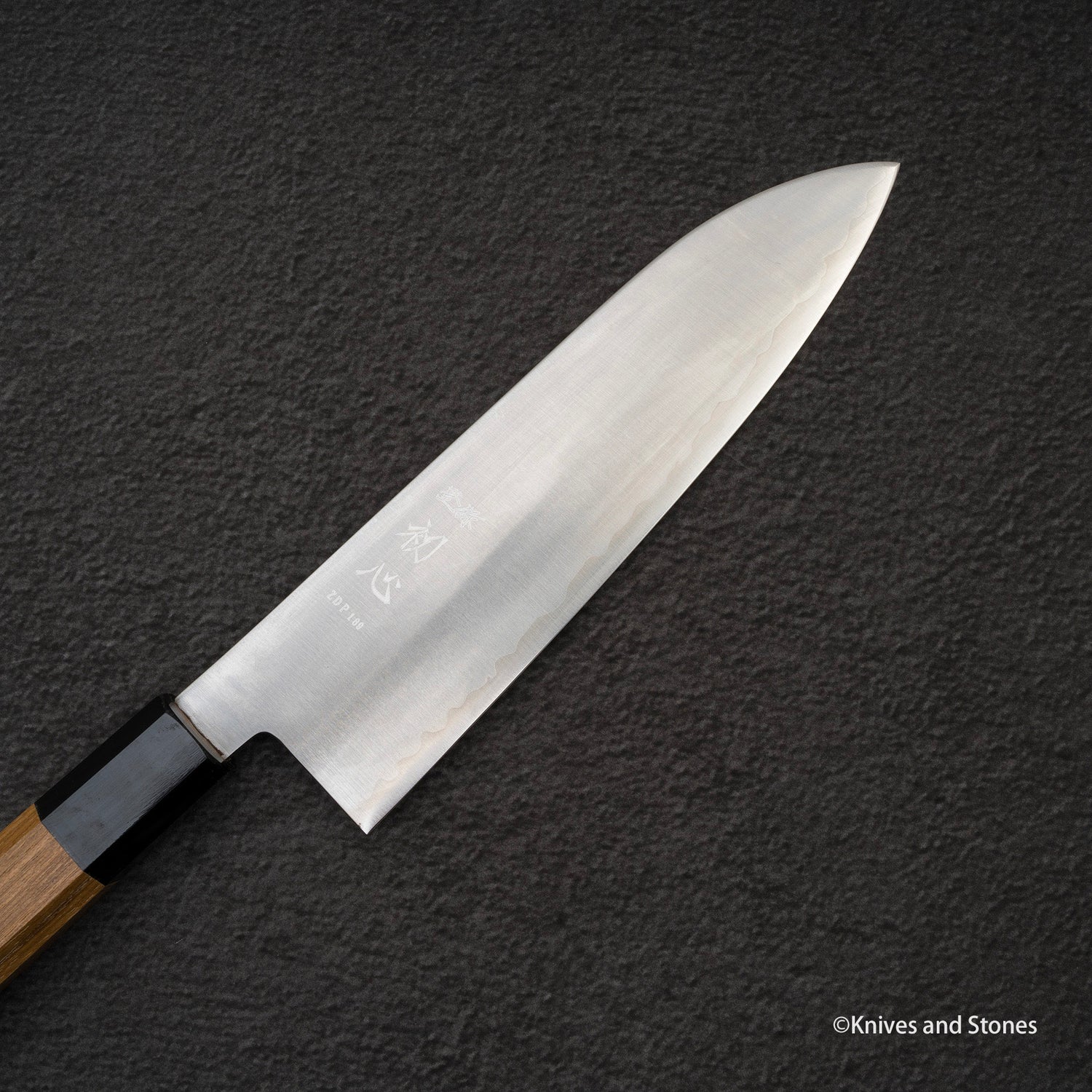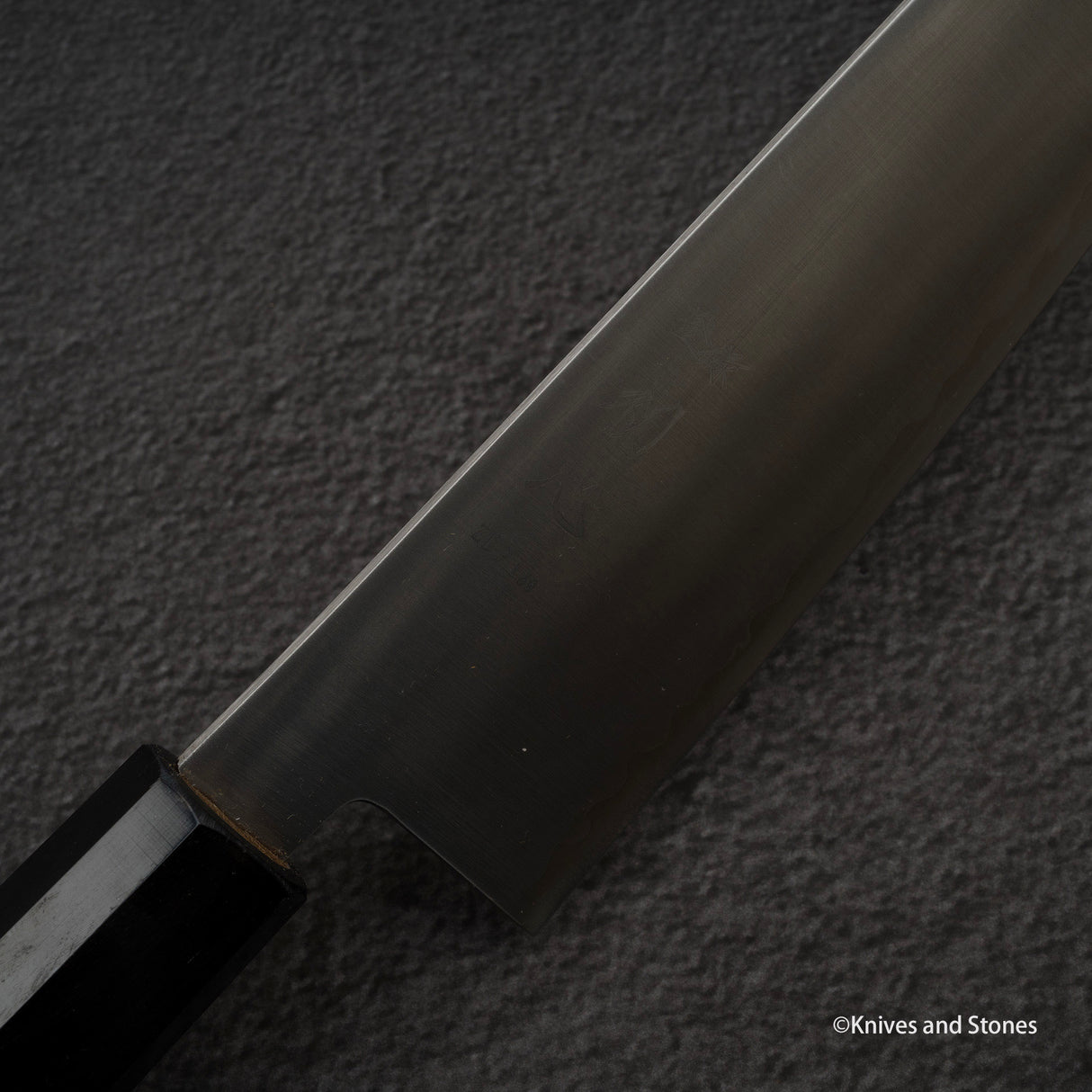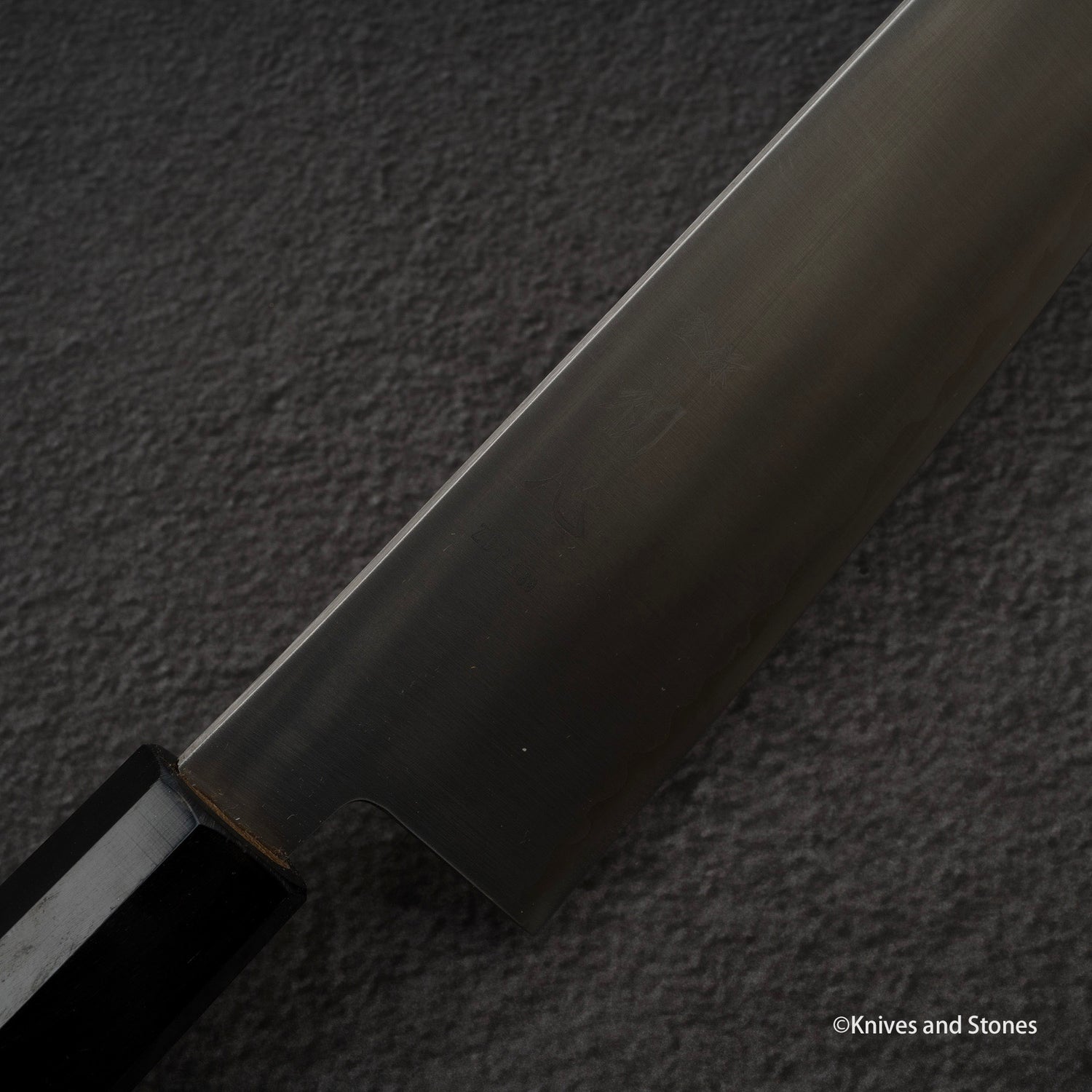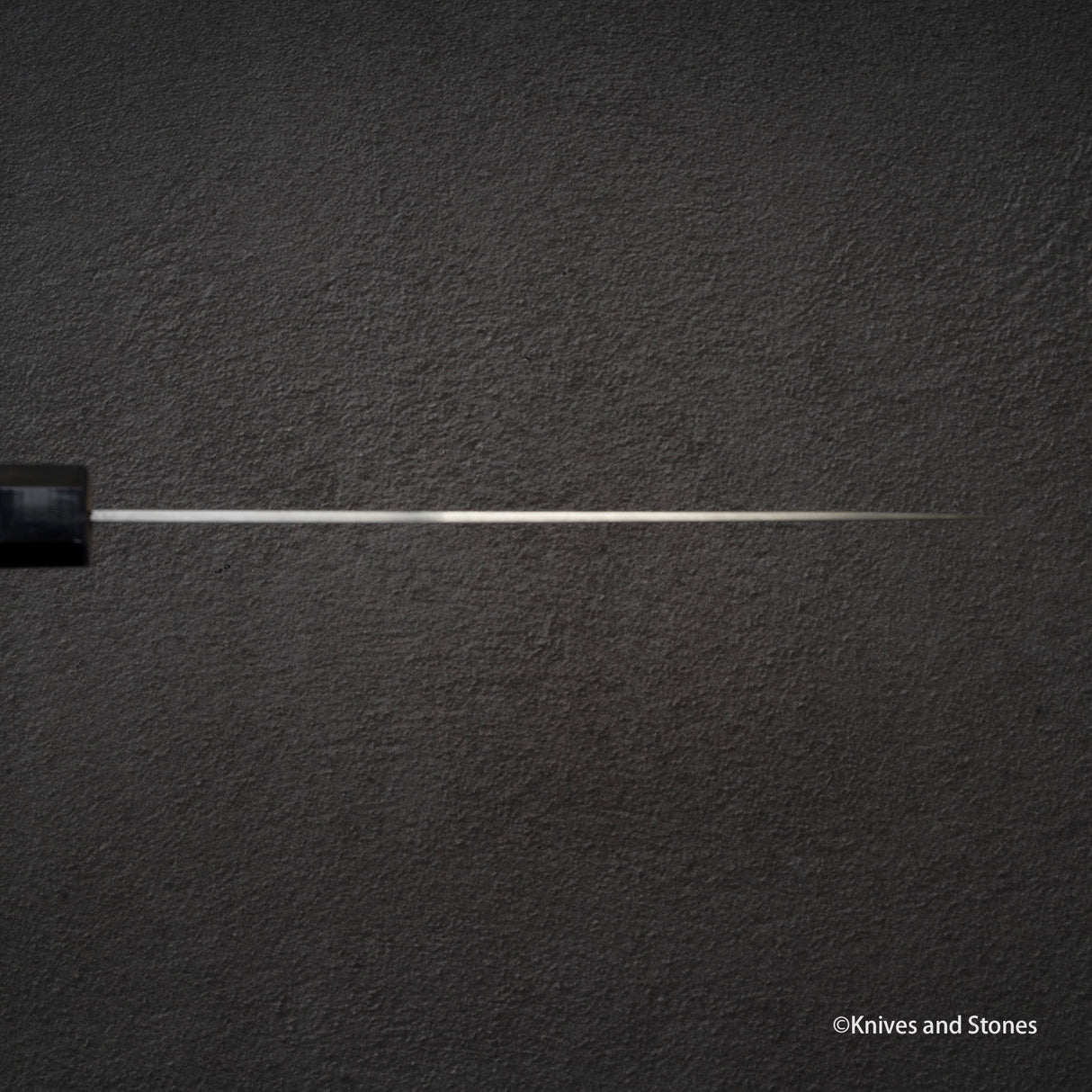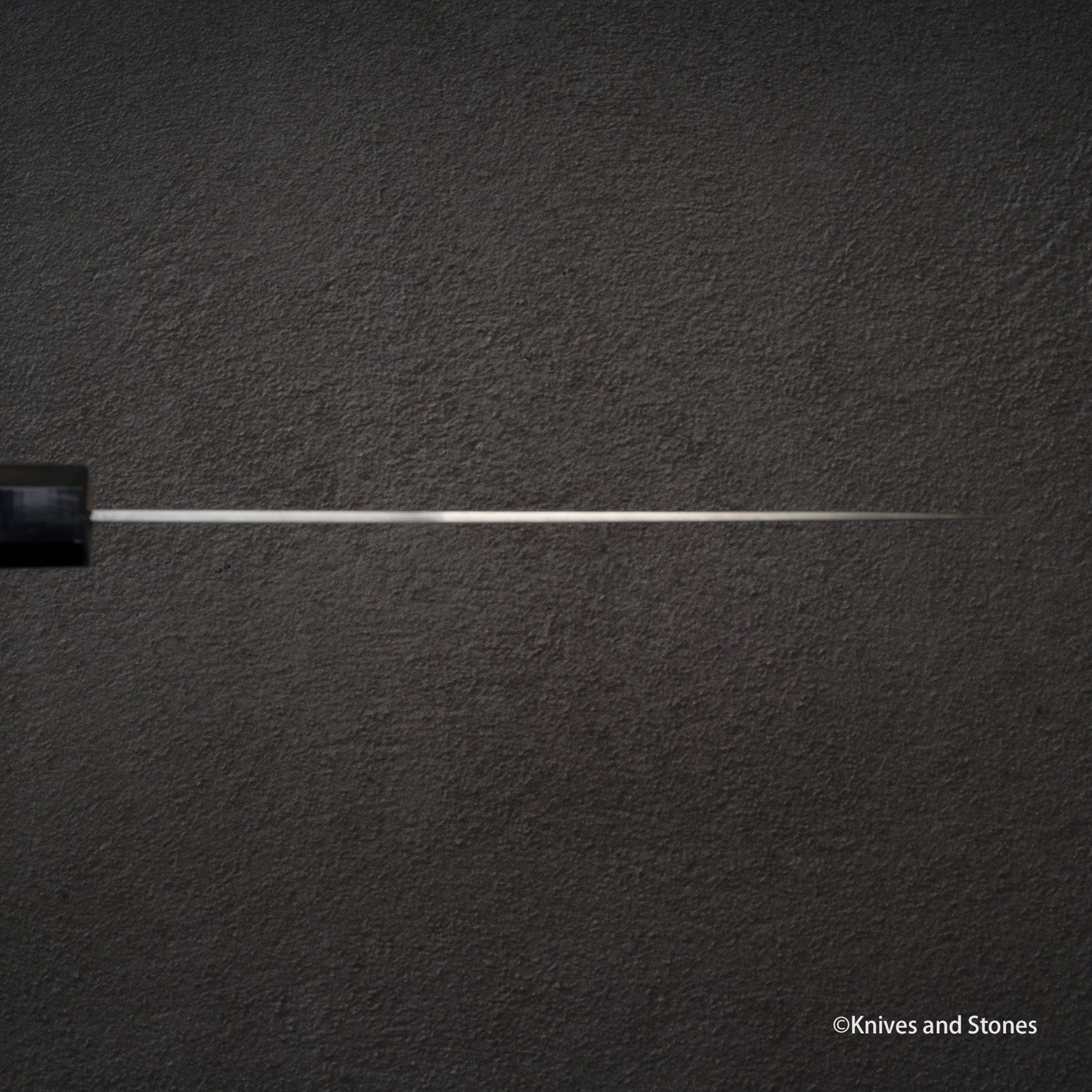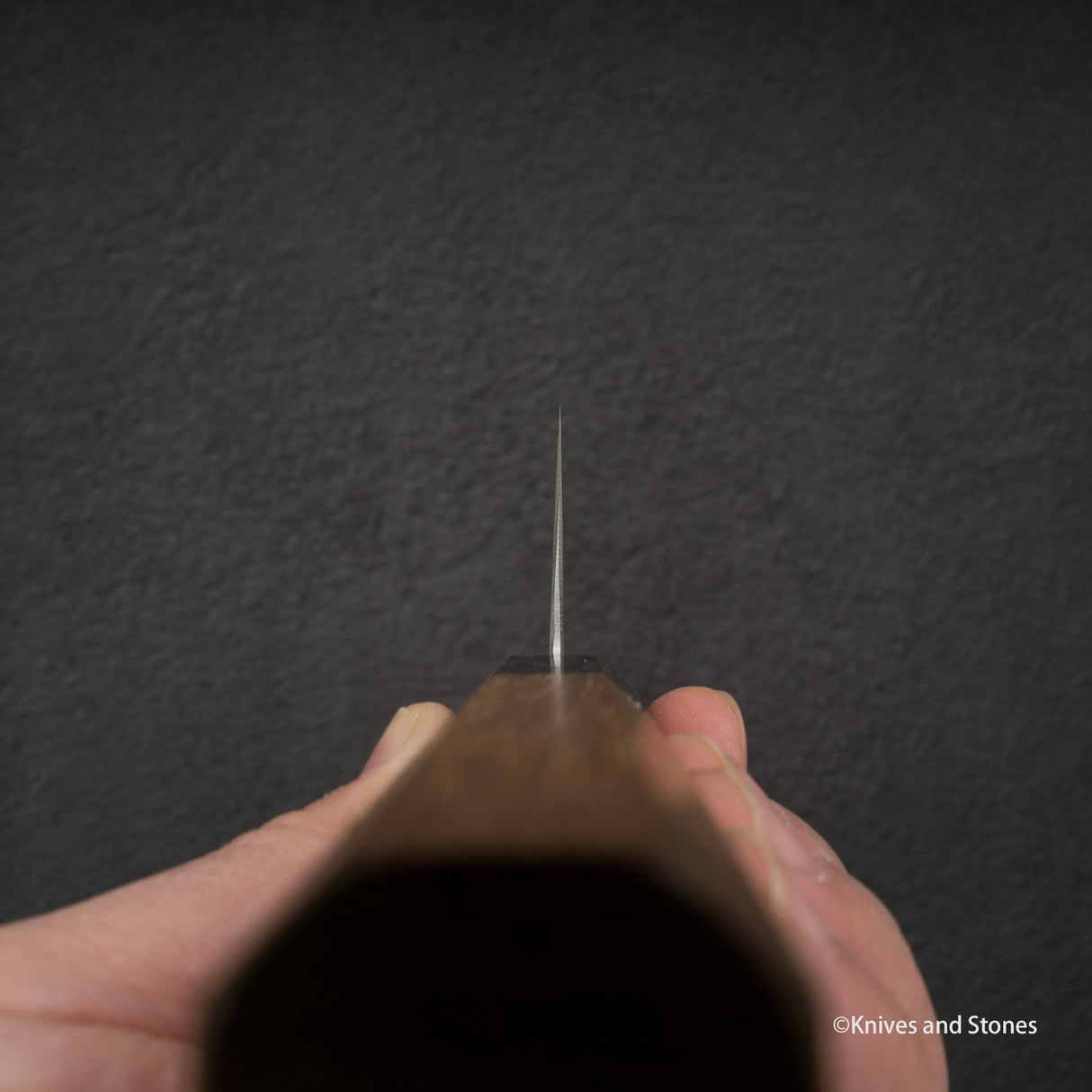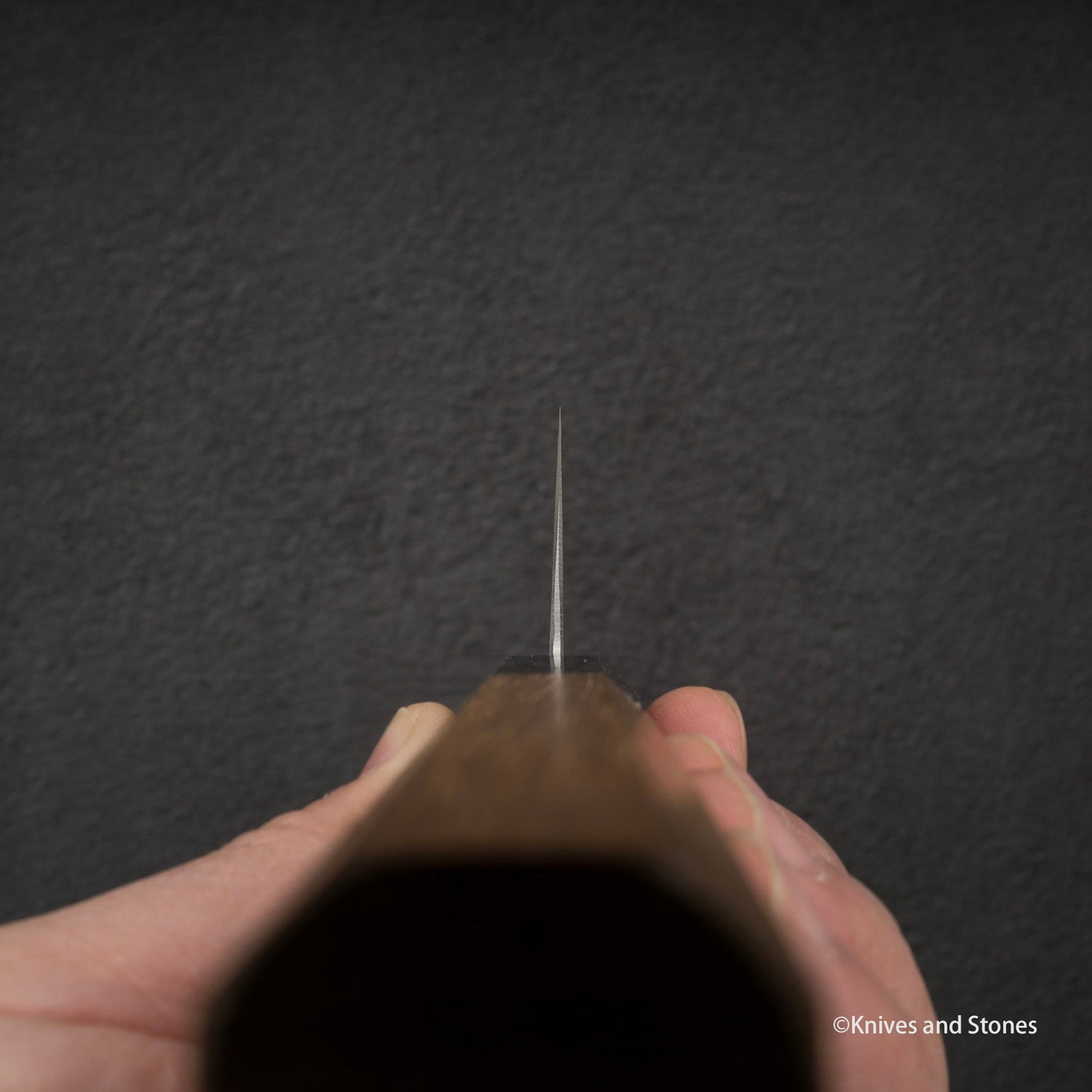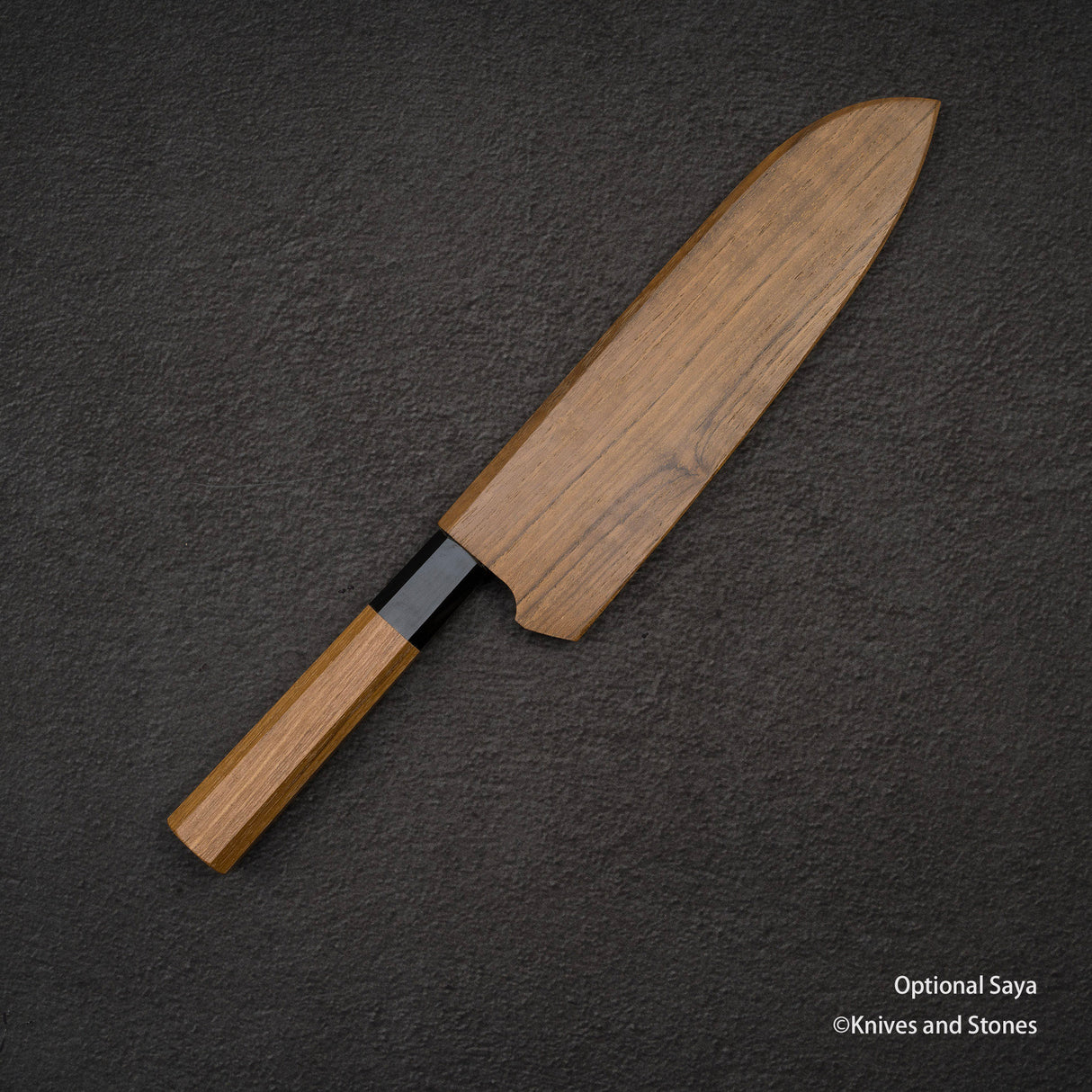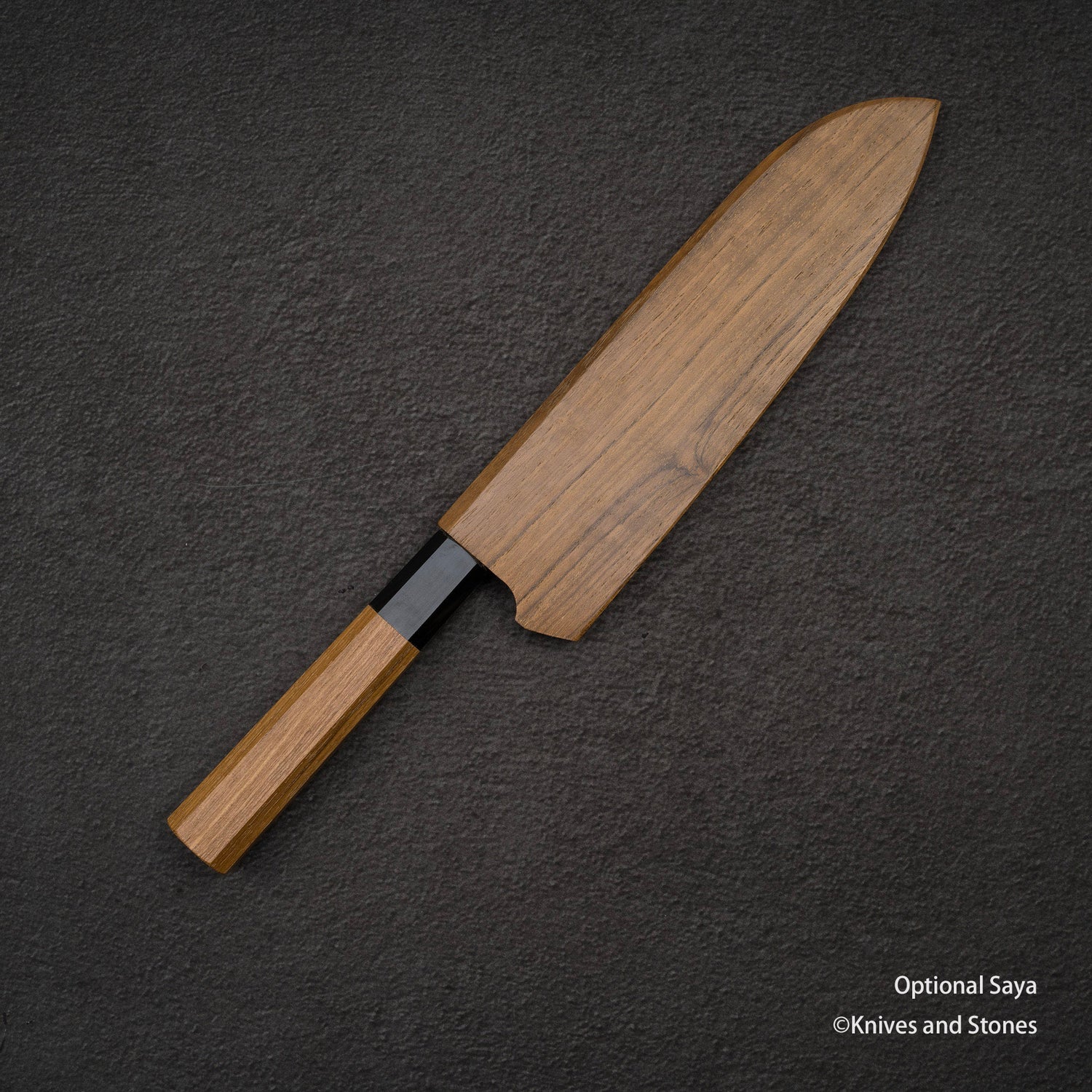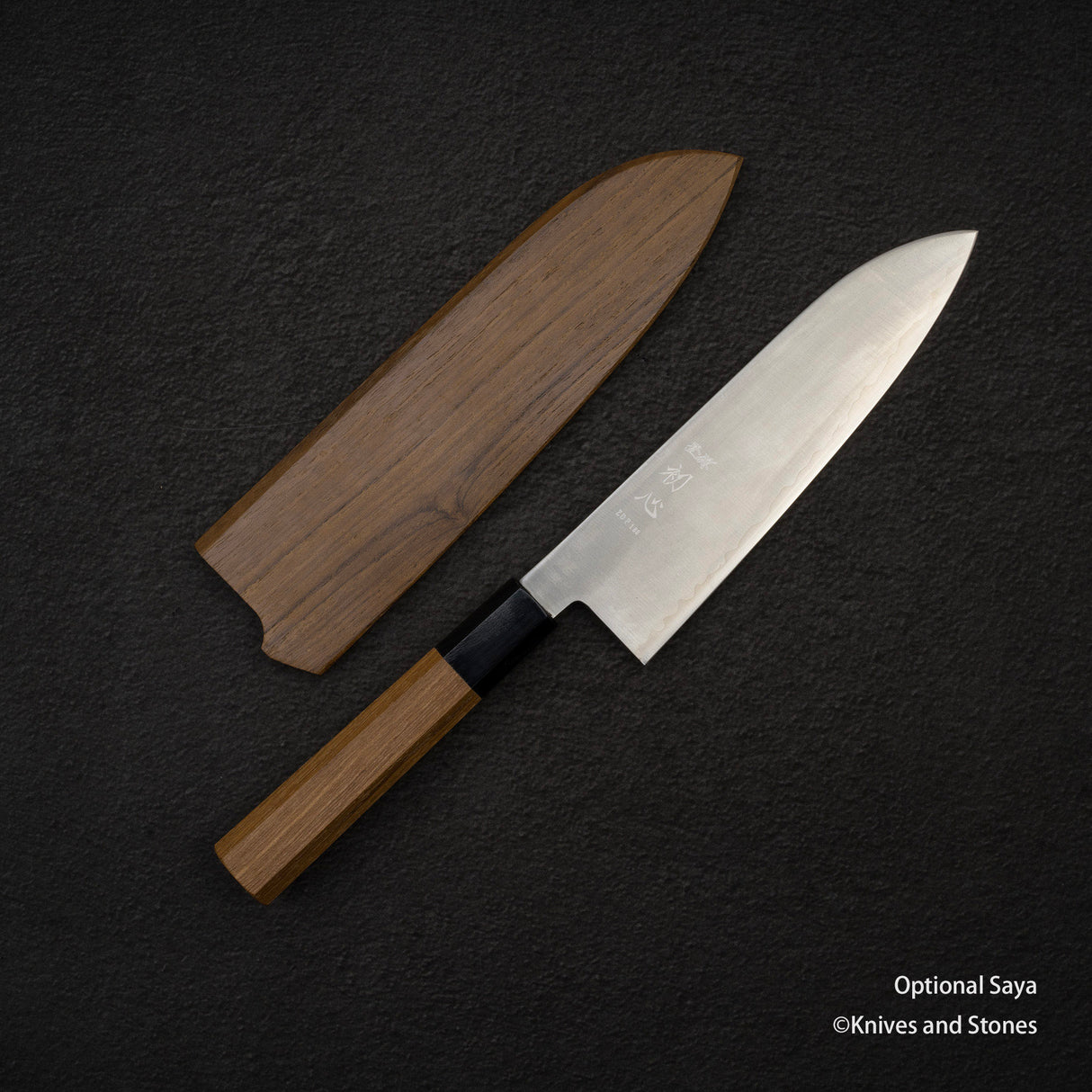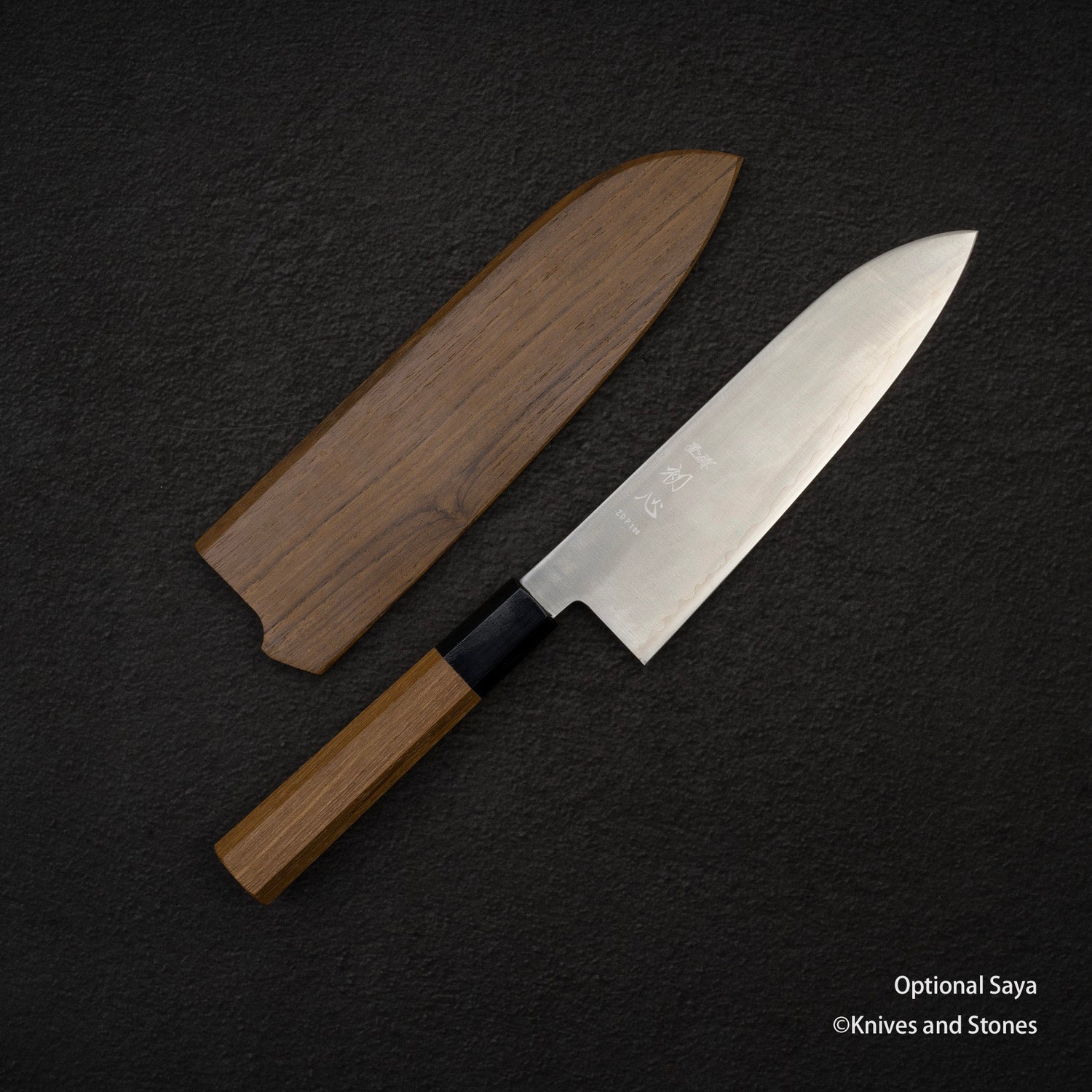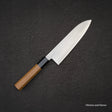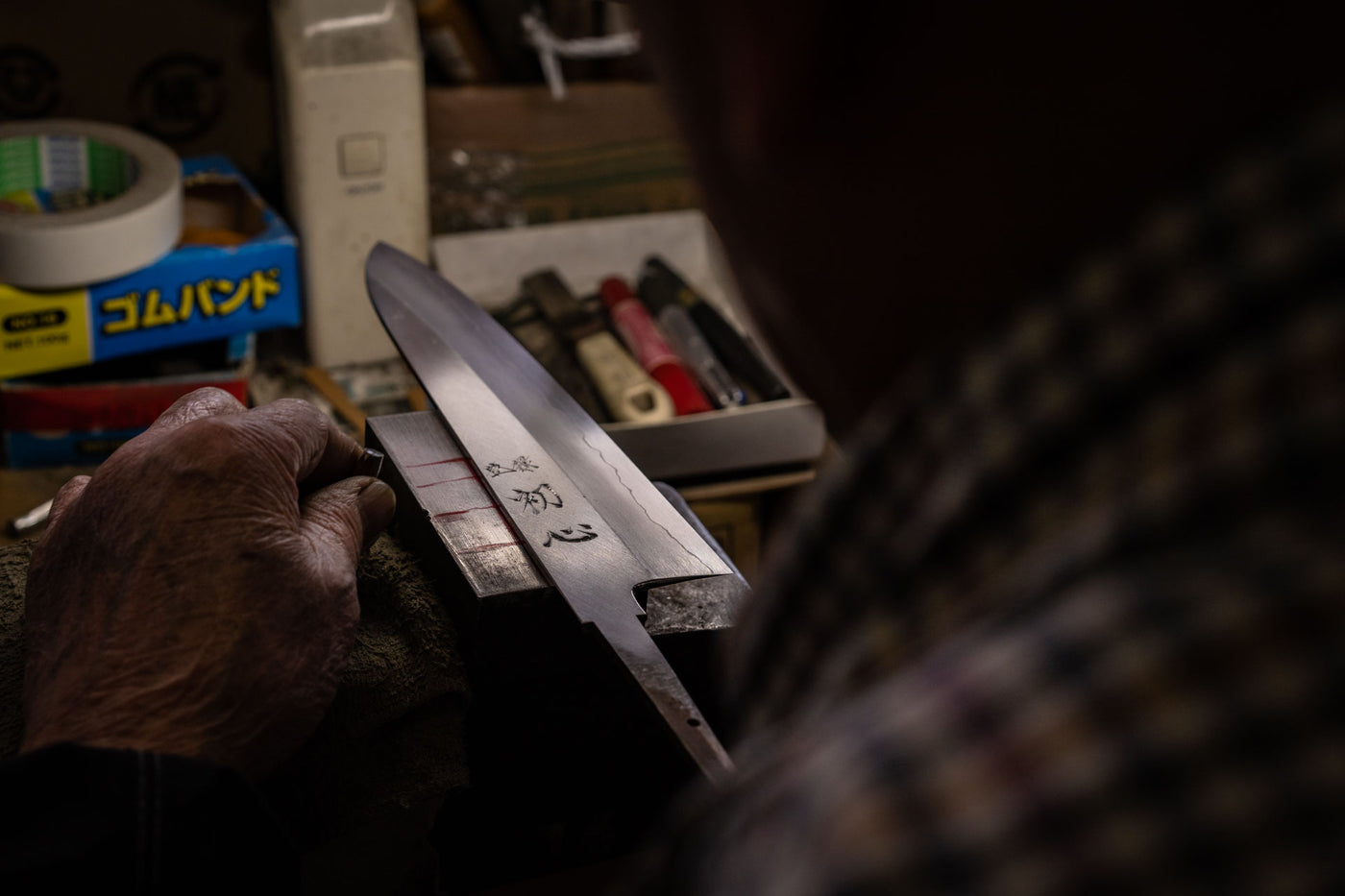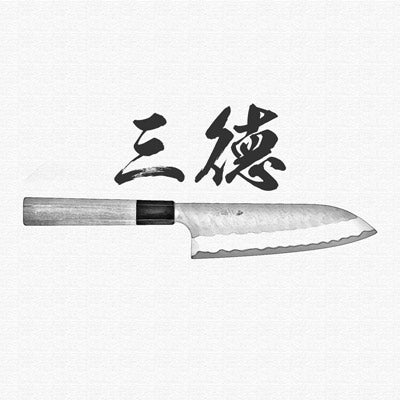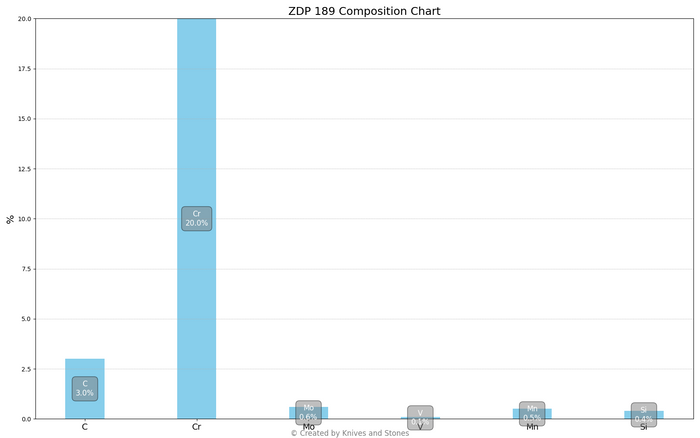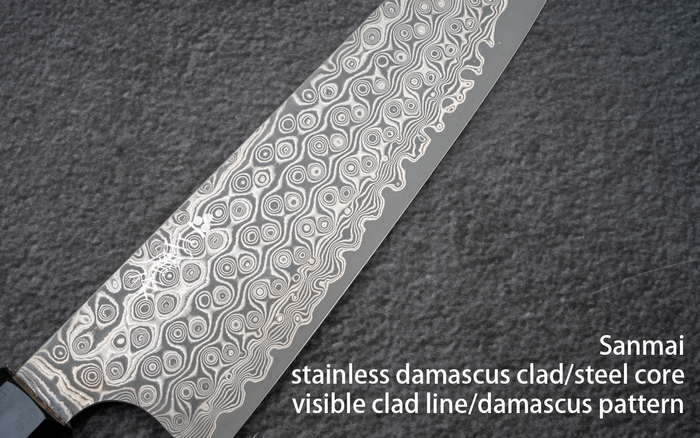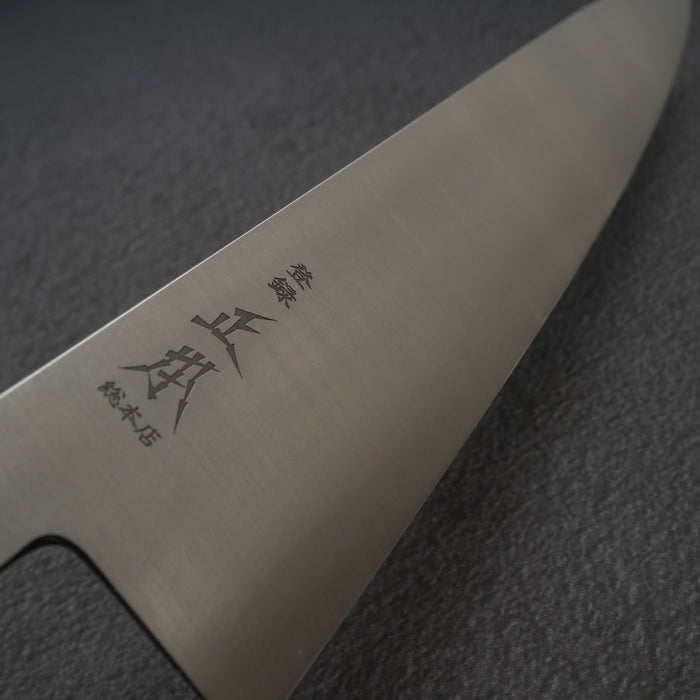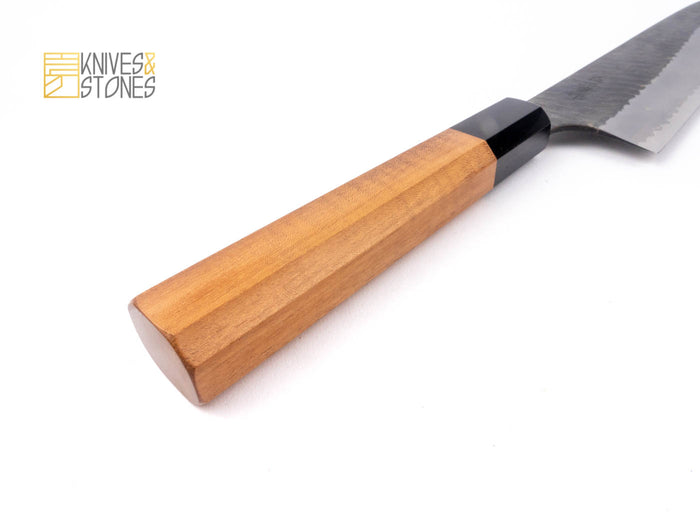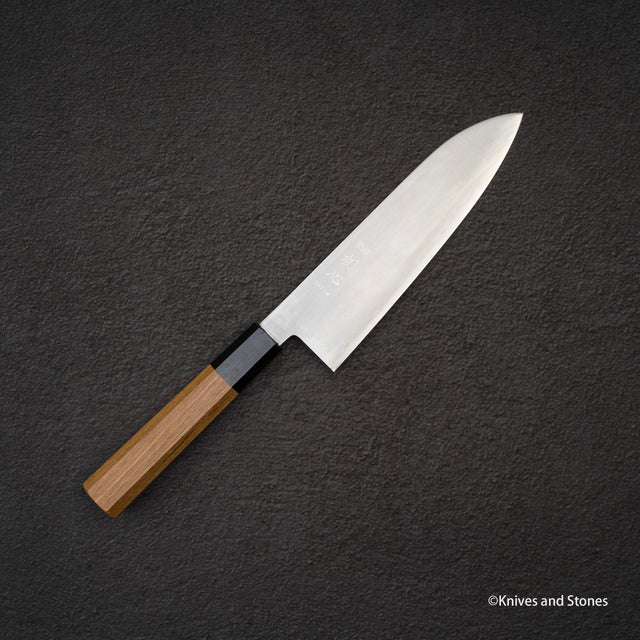Hatsukokoro | SKU:
HT-HB189-ST180
Hatsukokoro Hayabusa ZDP-189 Santoku 180mm
$389.95
Unit price
/
Unavailable
Hatsukokoro Hayabusa ZDP-189 Santoku 180mm is backordered and will ship as soon as it is back in stock.
Couldn't load pickup availability
Set currency to AUD to view correct price matching.
K&S Price: AU $389.95* inc. tax , vs:
K&S Price: AU $389.95* inc. tax , vs:
* For overseas buyers you pay no GST (10%) and low shipping rate.
Last Update:
Detailed Specifications
| Line | Hatsukokoro Hayabusa ZDP-189 |
| Profile | Santoku |
| Bevel Type | Double Bevel |
| Weight | 127 g 4.48 oz |
| Edge Length | 180 mm .7.09 inch |
| Heel Height | 49 mm .1.93 inch |
| Width @ Spine | 2.2 mm 0.09 inch |
| Width @ Mid | 2.0 mm 0.08 inch |
| Width @ 1cm from Tip | 1.0 mm 0.04 inch |
| Steel | ZDP-189 | Powdered Stainless |
| Blade Construction | Sanmai - Stainless Damascus Clad |
| Hardness (HRC) | 63 - 66 |
| Surface Finish | Migaki |
| Handle | Octagonal Teak Black Ferrule |
| Region | Hyogo |
| Best for |
|

| Pros | Cons |
|
|
|
Care Instruction
- Don't cut hard things! Japanese knives are brittle so bone hacking is a NO NO!
- Wash with neutral detergent after use, and wipe dry;
- Please don't wash knife with dishwasher, it will damage the wood handle;
- Be careful not to leave the knife close to a heat source for a long time;
- It is a lot more dangerous to cut with a blunt knife than a sharp knife!
- It is best to sharpen a Japanese knife regularly on a waterstone.

